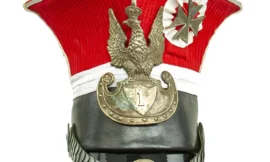The SA80 (Small Arms for the 1980s) is a family of British-made firearms that entered service in the late 20th century and continues to be used by the British Armed Forces today. Initially, the SA80 encountered significant issues and criticism regarding reliability and performance, but subsequent improvements have transformed it into a reliable and effective weapon system.
Historical Background
The development of the SA80 began in the 1970s with the aim of replacing the aging L1A1 Self-Loading Rifle (SLR), which was a British variant of the FN FAL. The SA80 family includes several variants, primarily the L85A1 Assault Rifle and its subsequent iterations.
Design and Features
The SA80, specifically the L85A1 and its successors, incorporates several notable design features:
- Bullpup Configuration: Unlike traditional rifles where the action and magazine are forward of the trigger, the SA80 is a bullpup design, which means the action and magazine are located behind the trigger. This configuration allows for a shorter overall length while maintaining a full-length barrel, improving maneuverability in confined spaces.
- Chambering: The SA80 is chambered in 5.56×45mm NATO, the standard rifle cartridge for NATO forces. This cartridge provides good performance in terms of range, accuracy, and controllable recoil.
- Gas-Operated, Rotating Bolt: The SA80 operates on a gas-operated system with a rotating bolt, which is common in modern assault rifles. This mechanism ensures reliable cycling of the action and good accuracy.
- Modularity: The SA80 platform is modular, allowing for various configurations and adaptations. This includes the ability to mount optics, grenade launchers, and other accessories, adapting the weapon to different combat roles.
- Integrated Optical Sight: Starting with the L85A2 variant, the SA80 incorporates an integrated optical sight (SUSAT – Sight Unit Small Arms Trilux) for improved accuracy and target acquisition.
- Ergonomics: The SA80 is designed to be ergonomic and user-friendly, with controls and features that are accessible and intuitive for the operator.
Variants
The primary variants of the SA80 include:
- L85A1: The initial production variant that entered service in the late 1980s. It faced significant reliability issues and criticism early on.
- L85A2: Introduced in the early 2000s, the L85A2 addressed many of the reliability issues of the L85A1 through a comprehensive refurbishment program. It became the standard service rifle of the British Armed Forces and offered improved durability and performance.
- L85A3: An upgraded version of the L85A2, featuring further improvements and modernization efforts to extend the rifle’s service life.
- L86A1: A Light Support Weapon (LSW) variant of the SA80, equipped with a longer barrel and bipod for sustained automatic fire. It served as a squad automatic weapon (SAW) complementing the standard rifles.
Military Use
The SA80 has been used extensively by the British Armed Forces in various deployments and operations:
- Gulf War: The SA80 saw combat during the Gulf War in 1990-1991, where its performance issues were highlighted.
- Balkans Conflict: Deployed in peacekeeping and combat roles during the conflicts in the Balkans in the 1990s.
- Iraq and Afghanistan Wars: The SA80 was used during operations in Iraq and Afghanistan, where it proved its reliability and effectiveness in modern combat environments.
Performance and Issues
Early in its service life, the SA80, particularly the L85A1 variant, faced criticism for reliability issues, including stoppages and malfunctions. These issues were largely attributed to manufacturing and design flaws. However, with the introduction of the L85A2 and subsequent improvements, many of these reliability concerns were addressed. The SA80 is now considered a reliable and effective weapon system, suitable for modern combat operations.
Legacy and Influence
The SA80 represents a significant chapter in British firearms history:
- Modernization: The SA80’s development and subsequent improvements reflect efforts to modernize British infantry small arms for the 21st century.
- British Military Identity: The SA80 has become synonymous with the British Armed Forces and remains a symbol of its infantry capabilities.
- Lessons Learned: The challenges faced with the SA80’s early variants have informed subsequent weapon development programs, emphasizing the importance of rigorous testing and user feedback.
Conclusion
The SA80, despite its troubled beginnings, has evolved into a reliable and effective firearm platform for the British Armed Forces. Through continuous improvements and upgrades, the SA80 has demonstrated its capability to meet the demands of modern warfare, reflecting its adaptability and importance within the realm of infantry weapons.


